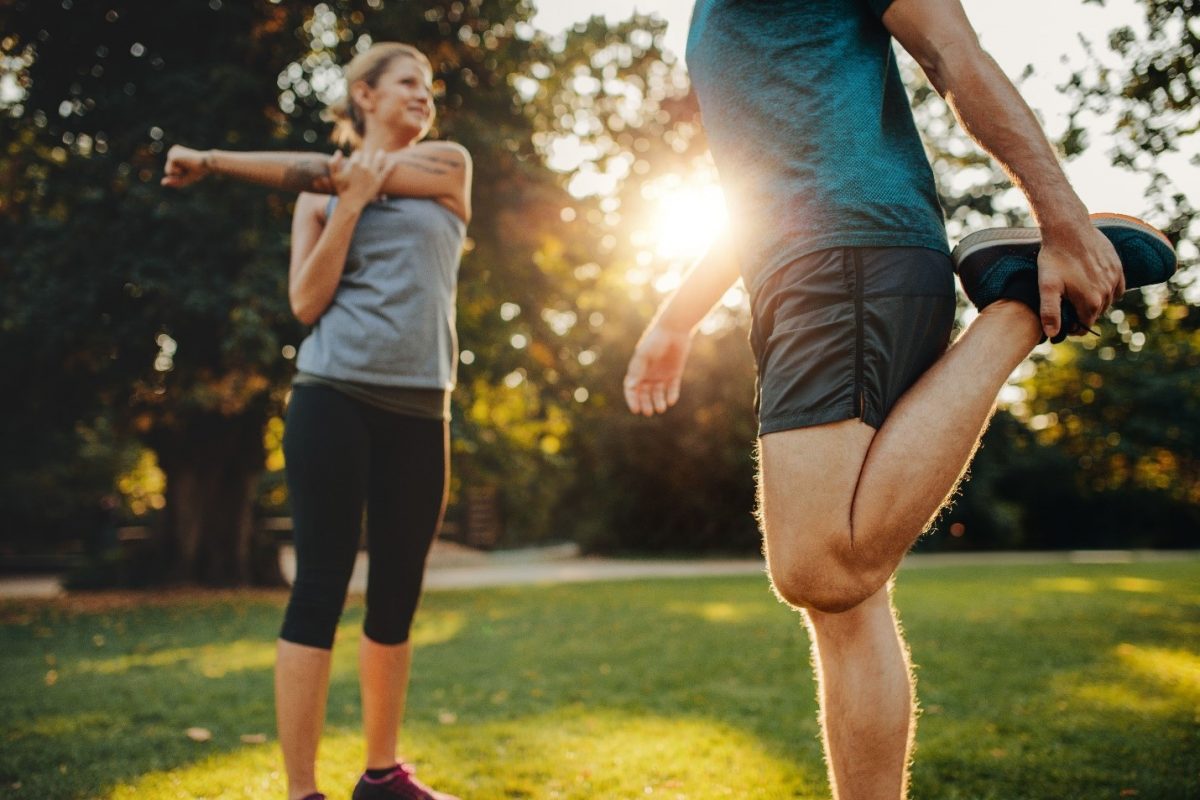Preparation maximizes performance – this is particularly true when it comes to warming up. But how should you warm up for a high-intensity session?
Warming up brings several benefits
The body’s energy-supplying systems are activated so that respiration and cardiac activity are increased, and enzyme activity in the muscles increases. This increases blood flow to the muscles and improves the supply of oxygen and energy.
Warming up stimulates your nervous system. In your muscles, the temperature rises. This leads to a better reaction and contraction speed. At the same time, central brain structures are activated. Therefore, attention increases. The athlete can react faster in critical situations.
The musculoskeletal system is stretched and tendons and ligaments become more elastic as a result. In your joints, the production of synovial fluid increases. The joint cartilage becomes saturated with this so-called synovial fluid, which leads to a larger external surface area and thus to better pressure distribution.
Basic Rules for Warming Up
It is difficult to give general tips because not all athletes need the same amount of warmup. The length and intensity of the warmup varies depending on the sport and level of performance. Even though the perfect warmup looks different for every athlete, there are some basic rules to follow:
First phase – general warmup: Here the whole body is involved, large muscle groups are activated and the intensity is increased only slowly. So, for example, running ABC such as jogging loosely forward, sideways and backward, in between circling with the arms, lifting the knees or heels. And afterwards light gymnastic exercises.
Second phase – specific warm-up: The aim here is to bring precisely those muscles to operating temperature that are particularly important for the sport in question. You achieve this mainly through movements typical of the discipline: The marathon runner does strides, the cyclist gets on their bike, and the swimmer dives into the water. This phase is much more intense than the first one. Here you prepare for the upcoming performance in a very specific way.
An optimal time for a warm up is 20 to 45. The more intense the exercises are, the shorter they should be. They also need to closer to the start of the competition or workout. An important not is that you should should warm up but not fatigue your muscles.
Ideally, You should complete the warm-up five to ten minutes before the start of the competition. This is how long the muscles remain at their optimal temperature, after which a large part of the positive effect is lost again relatively quickly.
Other Considerations
The demands of the competition are a deciding factor for the warm up. A marathon race requires a measured start and therefore does not require an extreme warm-up. At the start of a 10-km run, Olympic triathlon or cross-country bike race, on the other hand, the intensity is very high right from the start, and this should be taken into account in the warm-up phase.
Age is also a crucial factor. The older the athlete, the more carefully the warm-up program must be designed. Older people should choose a low intensity and increase it only very slowly. However, this results in a significantly longer total duration.
The time of day also plays an important role. Since physical performance increases during the day, the earlier the warm-up is, the longer it needs to be.
Dynamic stretching also helps to prepare the body. As with static stretching, you bring your muscles into a starting position in which a slight pull can be felt. Then change the stretching position with small, rocking movements. Repeat these movements 10 to 15 times. In this way, warm-up phase builds the required muscle tension.
This Blog Article was made available to us by Fit for Life. Fit for Life is the Swiss magazine for fitness, running and endurance sports. Would you like to read such articles regularly? Then Click here.

